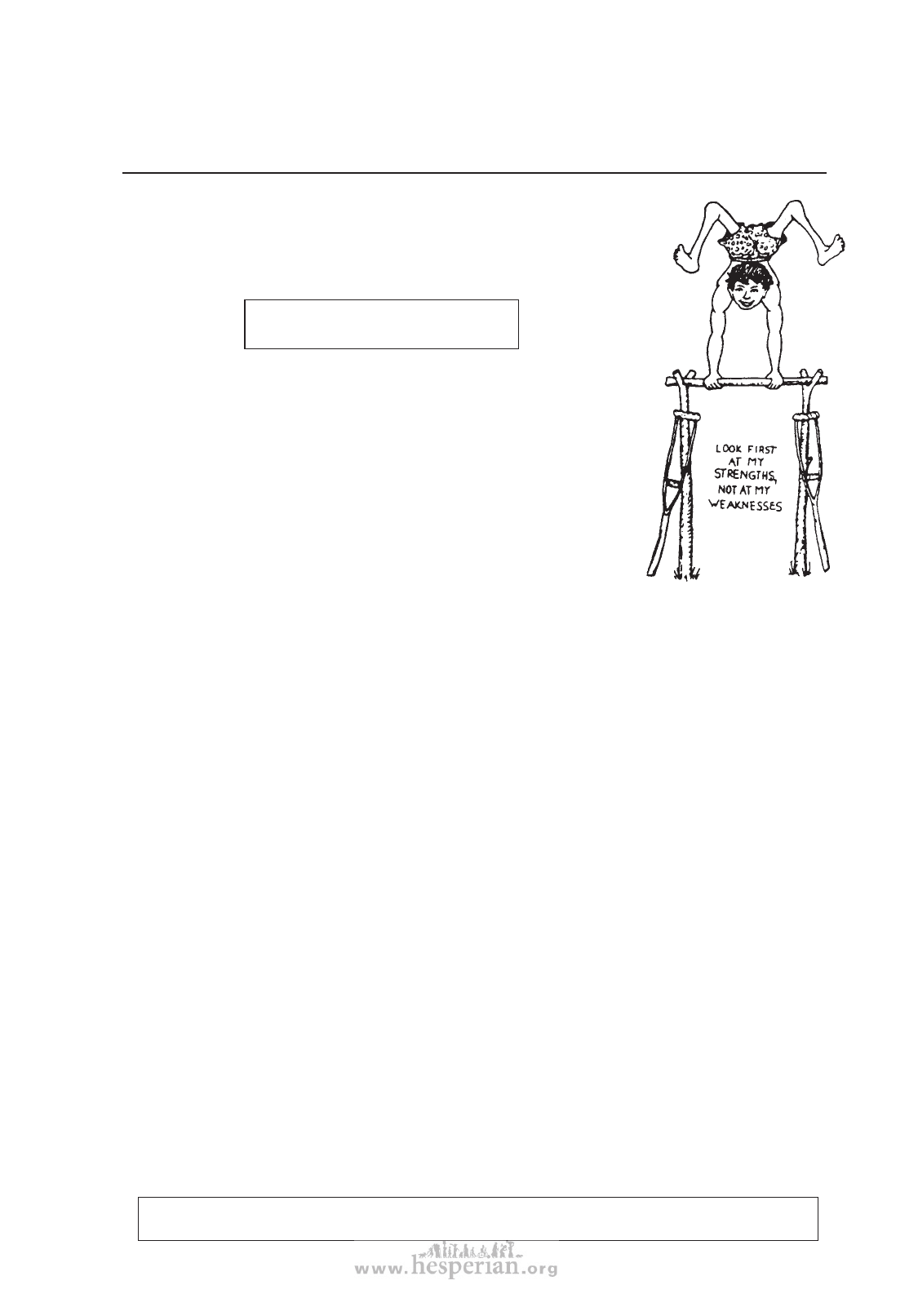
Examining and Evaluating
the Disabled Child
4CHAPTER
21
To decide what kind of special help, if any, a disabled child may
need, first we need to learn as much as we can about the child.
Although we may be concerned about her difficulties, we must
always try to look at the whole child. Remember that:
A child’s abilities are more
important than her disabilities.
The aim of rehabilitation is to help the child to function better
at home and in the community. So when you examine a child,
try to relate all your observations to what the child can do,
cannot do, and might be able to do.
What a child is and does depends partly on other persons.
So we must also look at the child’s abilities and difficulties in
relation to her home, her family, and her village or neighborhood.
To evaluate a child’s needs, try to answer these questions:
• What can the child do and not do? How does this compare with other children the
same age in your community?
• What problems does the child have? How and when did they begin? Are they getting
better, worse, or are they the same?
• In what ways are the child’s body, mind, senses, or behavior affected? How does
each specific problem affect what she does?
• What secondary problems are developing? (Problems that result after and because of
the original problem.)
• What is the home situation like? What are the resources and limitations within the
family and community that may increase or hold back the child’s possibilities?
• In what way has the child adjusted to her disability, or learned to manage?
To find the answers to these questions, a health or rehabilitation worker needs to do 3
things:
1. Observe the child carefully—including her interaction with the family and with other
persons.
2. Take a ‘history’. Ask the parents and child (if old enough) for all information they can
provide. Obtain medical records if possible.
3. Examine the child to find out how well and in what way different parts of her body
and mind work, how developed they are, and how much they affect her strengths,
weaknesses or problems.
BE SURE TO LOOK AT THE WHOLE CHILD—NOT JUST THE DISABILITY